2017 marks the 100th year of Mitsubishi producing cars
MITSUBISHI’S AUTOMOTIVE ORIGINS DATE BACK TO 1917, WHEN THE MITSUBISHI SHIPBUILDING CO., LTD. INTRODUCED THE MITSUBISHI MODEL A.
Mitsubishi’s automotive origins date back to 1917, when the Mitsubishi Shipbuilding Co., Ltd. introduced the Mitsubishi Model A, Japan’s first series-production automobile. An entirely hand-built seven-seater sedan based on the Fiat Tipo 3, it proved expensive compared to its American and European mass-produced rivals, and was discontinued in 1921 after only 22 had been built.
In 1934, Mitsubishi Shipbuilding was merged with the Mitsubishi Aircraft Co., a company established in 1920 to manufacture aircraft engines and other parts. The unified company was known as Mitsubishi Heavy Industries (MHI), MHI concentrated on manufacturing aircraft, ships, railroad cars and machinery, but in 1937 developed the PX33, a prototype sedan for military use.
Immediately following the end of the Second World War, the company returned to manufacturing vehicles, ordered by the Allied powers to be dismantled in 1950, the Mitsubishi Heavy Industries was split into three regional companies
1917: The Mitsubishi Model-A takes its place in Japanese history as a pioneer of the first mass-production passenger car.

1933: PX33 is introduced as Japan’s first 4-wheel drive production car. This was the origin of Mitsubishi 4WD technology.

1962: Mitsubishi Motor’s inaugural international motorsports event, the Macau Grand Prix (under 750cc class). Mitsubishi 500 sets a new course record and wins its class.


1970: Mitsubishi begins building a reputation in America with the launch of the Colt under the Dodge nameplate.
1970: EV research and development begins, setting the stage for Mitsubishi Motors to be the first automaker to mass market an electric vehicle.

1971: Mitsubishi Motors sells its first car in America, rebadged as the Dodge Colt.

1972: Mitsubishi enters the Colt F2000 Formula racecar and wins in a highly competitive Japanese open-wheel grand Prix. Mitsubishi applies aircraft technology to equip the Colt F2000 with a side radiator and wedge line.

1974: Looking for the ultimate test of durability, Mitsubishi enters the Lancer 1600GSR in the East African Safari Rally and dominates the competition with a first-second-third place sweep.

1976: Mitsubishi develops breakthrough Silent Shaft engine technology, leading to a patented method to reduce vibration in large-displacement four-cylinder engines. The technology allows four-cylinder engines to operate comparably with six-cylinder engines in terms of smoothness. Mitsubishi then licenses the technology to Porsche, Saab and Fiat.

1980: Mitsubishi is the first to engineer a turbocharged diesel engine for passenger cars in Japan.
1980: Mitsubishi finally achieved annual production of one million cars in 1980

1982: The Mitsubishi Motors marquee is introduced in America with three subsequent models: the Tredia, Cordia and Starion, and begins the development of Japanese turbocharged technology.

1985: With his third appearance in the toughest race in the world, Patrick Zaniroli makes endurance race history by winning the Dakkar Rally with the Mitsubishi Montero/Pajero, the first of many rally wins to come.
Chrysler and Mitsubishi agreed to unite in a vehicle manufacturing operation in Illinois. The venture provided a way to circumvent the voluntary import restrictions, while providing a new line of compact and subcompact cars for Chrysler. Diamond-Star Motors (DSM)—from the parent companies’ logos: three diamonds (Mitsubishi) and a pentastar (Chrysler)—was incorporated in October 1985, and in April 1986 ground was broken on a 1.9 million square-foot (177,000 m²) production facility. In 1987, the company was selling 67,000 cars a year in the U.S., but when the plant was completed in March 1988 it offered an annual capacity of 240,000 vehicles. Initially, three platform-sharing compact 2+2 coupés were released, the Mitsubishi Eclipse, Eagle Talon and Plymouth Laser, with other models being introduced in subsequent years.
The 1985 Hyundai Excel was sold in the United States as the Mitsubishi Precis between 1987 and 1994, whereas several other Mitsubishi models were rebadged as Hyundai, namely the Mitsubishi Chariot (as the Hyundai Santamo), the Mitsubishi Pajero (as the Hyundai Galloper) or the Mitsubishi Delica (as the Hyundai Porter).

1987: Galant VR-4 becomes the first vehicle to feature Active Controlled Suspension (ECS). This revolutionary system enables a comfortable ride and handling stability by automatically adjusting the vehicle height and damping force.
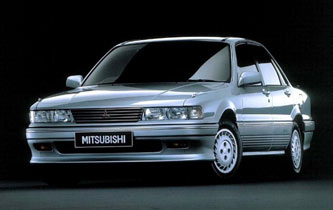
1987: The Galant VR-4 is the first vehicle to feature an Active Electronically Controlled Suspension (ECS) and receives Mitsubishi Motors’ first Car of the Year award in Japan.
1988: Mitsubishi Motors went public in 1988, ending its status as the only one of Japan’s eleven auto manufacturers to be privately held. Mitsubishi Heavy Industries agreed to reduce its share to 25 percent, retaining its position as largest single stockholder. Chrysler, meanwhile, increased its holding to over 20 percent.
1989: Motor Trend magazine names the Mitsubishi Galant VR-4 Import Car of the year.

1990: Mitsubishi is first in the world to design a Traction Control System.
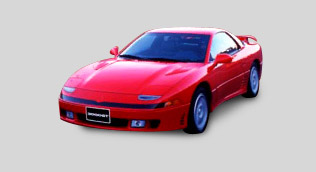

1990: The breakthrough 3000GT uses active aerodynamics to increase downforce at higher speeds, the first Japanese production vehicle to utilize this technology. Also equipped with innovative features such as six-cylinder twin-turbo engine, Electronically Controlled Suspension (ECS) and all-wheel steering.
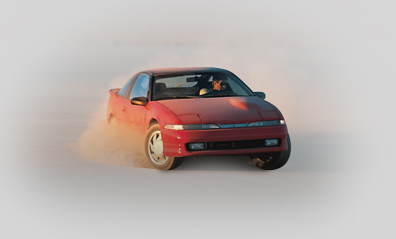
1990: Mitsubishi Motors launches the Eclipse in America with the turbocharged 4G63 engine and all-wheel drive technology. Makes Car and Driver’s ’10 Best List’ from 1989 through 1992.
1991: Second-generation Montero features technological advances, Multimode ABS and Active Trac 4WD, which enable the driver to switch between rear-wheel drive and full-time four-wheel drive while driving at up to 60mph.
In 1991, Chrysler sold its equity stake in Diamond-Star Motors to its partner, and from then on they continued to share components and manufacturing on a contractual basis only. Chrysler decreased its interest in Mitsubishi Motors to less than three percent in 1992, and announced its decision to divest itself of all its remaining shares on the open market in 1993. The two companies then terminated their close alliance with Chrysler. With DMS, and Mitsubishi no longer supplying parts for engines and transmissions for Chrysler.
1992: Japan Car Research and Journalist Conference names Mitsubishi Motor’s Intelligent & Innovative Electronic Control System (INVECS) Adaptive Shift Control Technology of the Year. INVECS learns and adapts to drivers’ driving habits.
The company introduces next-generation engine with Mitsubishi Innovative Valve Timing and Lift Electronic Control (MIVEC), allowing maximum engine performance while maintaining fuel efficiency.

1992: Mitsubishi makes a major commitment to international motorsports completion by debuting the Lancer Evolution 1 in the World Rally Championship.

1994: Japan Car Research and Journalist Conference honors Sportronic® + INVECS adaptive shift control as Technology of the Year.
1996: Company leads the development of environmentally friendly engineering by launching the world’s first Gasoline Direct Injection (GDI) engine. Unlike ordinary engines, GDI enables fuel to be injected directly into the cylinder for lean-burn combustion.

1996: With a Dakar Rally-tested Active TracTM 4WD system, Montero Sport quickly establishes itself as a highly capable off-road midsize SUV in the U.S. and around the world.
1996: Tommi Makinen wins a record four consecutive WRC Driver’s Championships from 1996 to 1999, while Mitsubishi claims the WRC Manufacturer’s Championship in 1998.

1998: Mitsubishi’s banner year in racing includes Montero’s domination of the Dakar Rally as it sweeps the top four positions, Lancer Evolution’s victory in the WRC and Montero’s win in the FIA World Class Cup Cross-Country Rally.

1999: A world record: First electric car to cover 2,000 kilometers in 24 hours.

2003: Mitsubishi introduces the Lancer Evolution in America

2004: The 4th generation Eclipse’s beautiful design follows the design cues of Eclipse Concept E, which earns a 2005 Industry Design Excellence Award.

2006: The 2nd generation Outlander is the first compact SUV to offer an environmentally friendly PZEV V6 engine, a lightweight aluminum roof, magnesium paddle shifters and a 30 GB HDD navigation system with digital music server.
2007: Mitsubishi is first to score seven straight Dakar rally wins. This marks the 12th Championship win.

2008: The 2nd generation Lancer Evolution hits the streets across America, introducing a host of engineering breakthroughs that include Super All-Wheel Control and the TC-SST transmission.

2008: Mitsubishi Motors proudly announces Drive@Earth, our pledge to create vehicles that can exist in complete harmony with people, society and the environment.
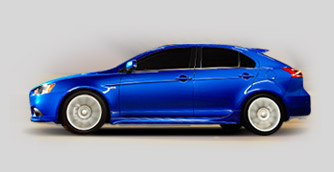
2009: Mitsubishi introduces the all-new Lancer Sportback, a fast, fun and versatile five-door with the same DNA as the race-inspired Lancer Evolution. Critics and drivers praise the sports car that’s into whatever you’re into.
2009: The Fuse Hands-free Link System® is unveiled in the redesigned 2010 Outlander. This revolutionary technology combines a Bluetooth® 2.0 handsfree phone interface with advanced voice control, allowing drivers to control their music, phone and phone book through voice command.

2010: The PX-MiEV concept vehicle is revealed to the public. Powered by Mitsubishi’s all-new plug-in hybrid system, PX-MiEV employs both serial and parallel hybrid technologies to maximize on-road performance while remaining at harmony with the earth.

2011: After intense speculation by the automotive press and years of development by Mitsubishi engineers, the production version of the 2010 Mitsubishi Innovative Electric Vehicle (i-MiEV) was made available for retail sale in Japan. In December, the remarkable all-electric i-MiEV begins to roll out in the United States. Leading the way in EV technology, the i-MiEV offers an astounding industry leading EPA rated 112MPGe, making it one of the most affordable and efficient mass produced electric vehicles available in the U.S. Another win-win situation.
2012 The Mitsubishi Motors brand celebrates its 30th anniversary in the U.S..
The popular Outlander Sport begins production in the U.S. for the first time in July at our manufacturing plant in Normal, IL.
#1 on the EPA’s list of Fuel Economy Leaders: The 2012 Model Year the all-electric i-MiEV is also named the ‘Greenest Vehicle of 2012’ by the American Council for an Energy Efficient Economy (ACEEE).

2012 Mitsubishi Motors’ inaugural two-car EV campaign at the Pikes Peak International Hill Climb sees an advanced i-MiEV Evolution racing prototype driven by Hiroshi Masuoka place second in the Electric Vehicle (EV) division. An essentially stock version of the 100 percent electric-powered 2012 Mitsubishi i-MiEV driven by Beccy Gordon comes in sixth place.
2013: Mitsubishi Motors returns to the Pikes Peak International Hill Climb in 2013 with a pair of all-new MiEV Evolution II race cars, placing second and third in class in the EV Division in the talented hands of two-time Dakar Rally winner Hiroshi Masuoka and six-time PPIHC motorcycle champion Greg Tracy.

2014: Mitsubishi Motors redesigns the Outlander for the 2014 model year with all-new exterior styling and interior enhancements, technologically-advanced safety features and a lightweight, aerodynamically-enhanced body.
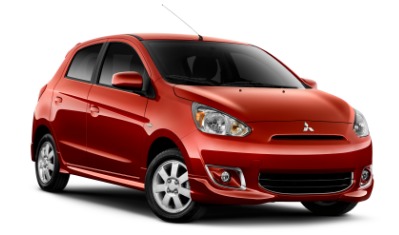
2014: The 2014 Mitsubishi Mirage 5-door sub-compact debut marks the return of the company’s lovable and popular small vehicle offering, and does so as the most fuel-efficient non-hybrid gasoline-powered vehicle available in America at the time.
2014: A pair of MiEV Evolution III all-electric prototype racecars place first and second within the Electric Vehicle division in the 92nd running of the Pikes Peak International Hill Climb (PPIHC) in the skillful hands of Greg Tracy and Hiroshi Masuoka. Tracy’s first-place finish is a mere 2.4 seconds behind overall 2014 race winner in a gasoline-powered Le Mans sports car prototype, proving that electric-powered vehicles are a dominant force in this challenging one-of-a-kind motorsport competition.
2015: Diamond-Star Motors, a Subsidiary of Mitsubishi Motors North America became defunct November 2015, In July, with the end of North American production, Mitsubishi announced that it would close the plant by November, but would continue to sell automobiles in North America. Production at the plant ended on 30 November 2015. The plant continued to operate with a minimal staff to produce replacement parts until May 2016, after which it closed permanently
In May 2016, Nissan set the acquisition of a 34% stake in Mitsubishi Motors, with the aim of making Nissan the largest and controlling shareholder of Mitsubishi and turning Mitsubishi into a member of the Renault-Nissan Alliance, thus handing MMC over to Franco-Japanese ownership. The Nissan acquisition was completed in October 2016.
MITSUBISHI MOTORS RE-CREATE’S THE CAR THAT STARTED IT ALL 100 YEARS AGO
To celebrate its centennial anniversary, Mitsubishi Motors North America, Inc. (MMNA) is reaching back to its beginning. In partnership with West Coast Customs, Mitsubishi will re-create the vehicle that started it all, the Mitsubishi Model A, with the latest technology found in the brand in this century. West Coast Customs will build a current day Mitsubishi Model A with the looks of the original 1917 vehicle on the platform of the brand’s most technologically advanced vehicle, the Outlander Plug-In Hybrid Electric Vehicle (PHEV).
“We’re proud to be a 100-year-old brand with a rich heritage in the automotive landscape. The Mitsubishi Model A is the vehicle that paved the way for many other unique and exciting models over the years and we’re excited to re-design it with West Coast Customs,” said Francine Harsini, senior director, marketing at MMNA. “The Mitsubishi Model A will feature all the distinctive aspects of the 1917 vehicle, but will be built on the PHEV platform and offer the latest in automotive technology.”
In 1917, the Mitsubishi Model A was the first car ever to be adorned with the three-diamond emblem when launched in Japan marking the beginning of a global automotive company that has now spanned a century of technological innovation. With the Model A, Mitsubishi’s automotive history began with a 22-car production run of Japan’s very first series of mass-produced vehicles.
West Coast Customs CEO and Founder, Ryan Friedlinghaus had this to say about the ground-breaking customization endeavor, “We are incredibly honored to have been chosen to take on this iconic build for Mitsubishi that celebrates the centennial anniversary of the company’s first mass produced vehicle. It is an incredibly exciting opportunity to be able to integrate the history of the original Mitsubishi Model A with the technology of current-day Mitsubishi vehicles to recreate the Mitsubishi Model A. Team members in every department of West Coast Customs are super excited to be involved with this build – truly a piece of automotive history.”
The vehicle is being built at the West Coast Customs facility in Burbank, CA and will be completed this summer. The build will be featured on an episode of Inside West Coast Customs, which airs on the Velocity network, Tuesdays, 9 PM PDT/EDT.
The Outlander PHEV is a perfect culmination of Mitsubishi’s history of automotive excellence: 50 years of electromobility and decades of four-wheel drive technology honed on the international rally circuit. Featuring a highly efficient 2.0-liter gas engine and two high-performance electric motors, and Mitsubishi’s superior Super All-Wheel Control (S-AWC) system, the Mitsubishi Outlander PHEV delivers SUV capabilities and EV fuel economy.


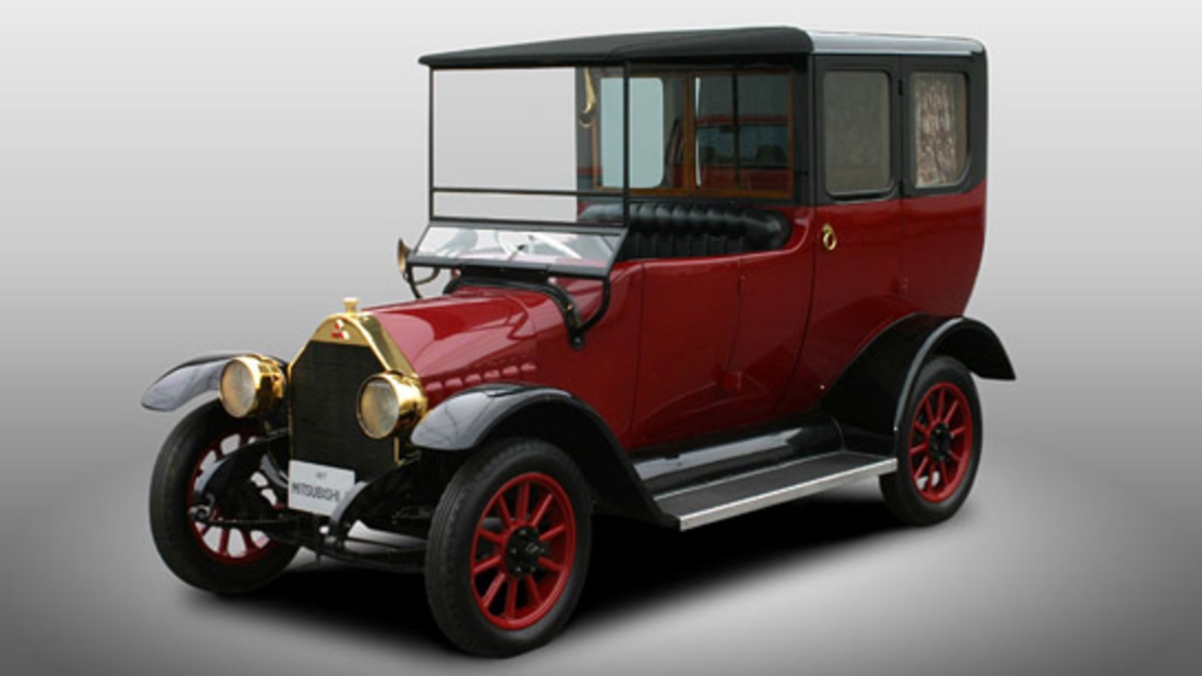
You must be logged in to post a comment.